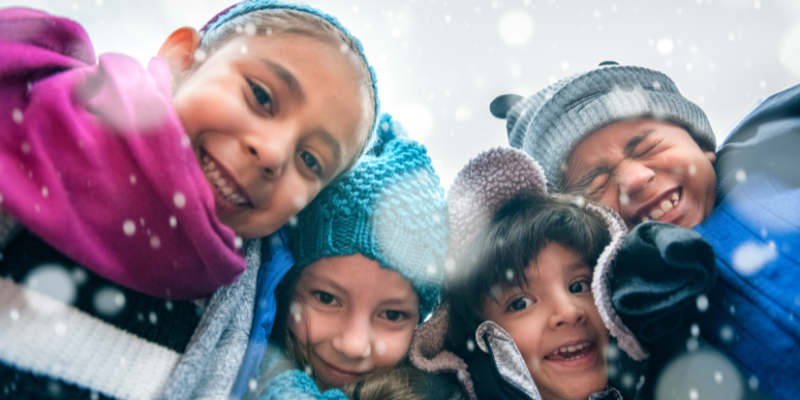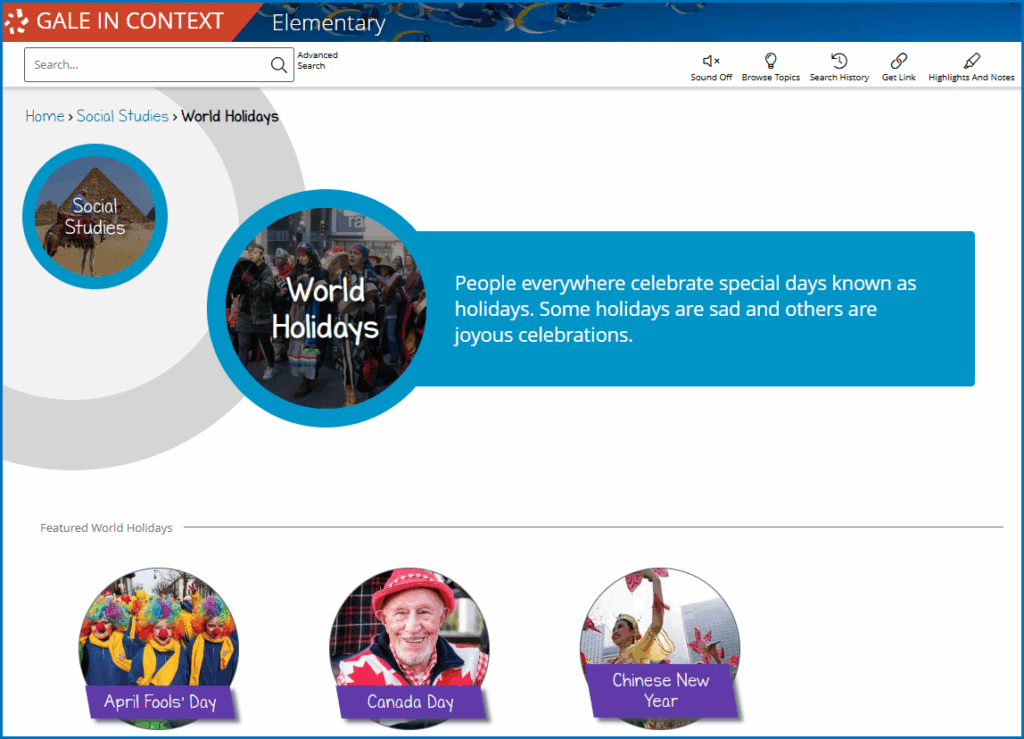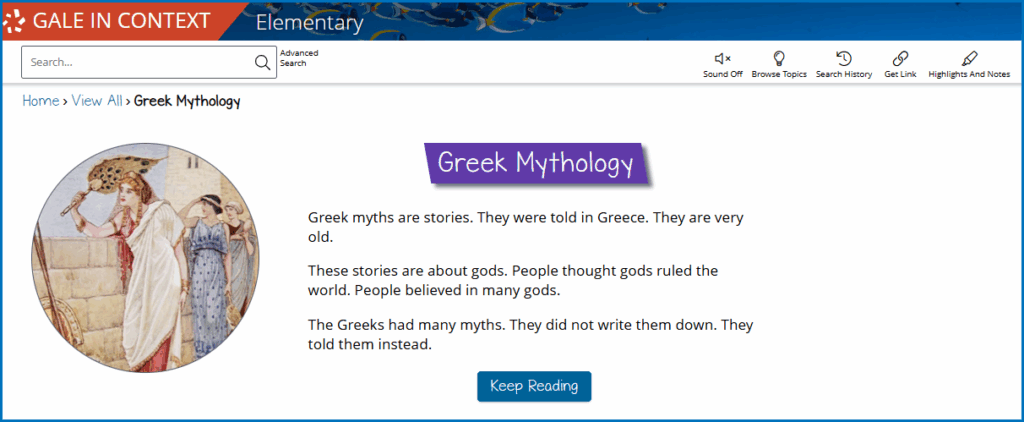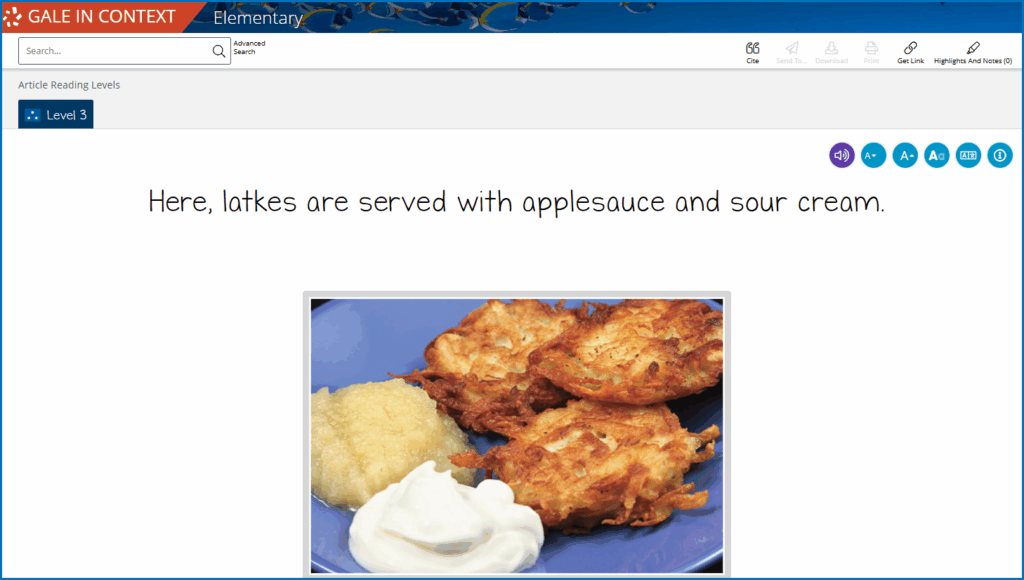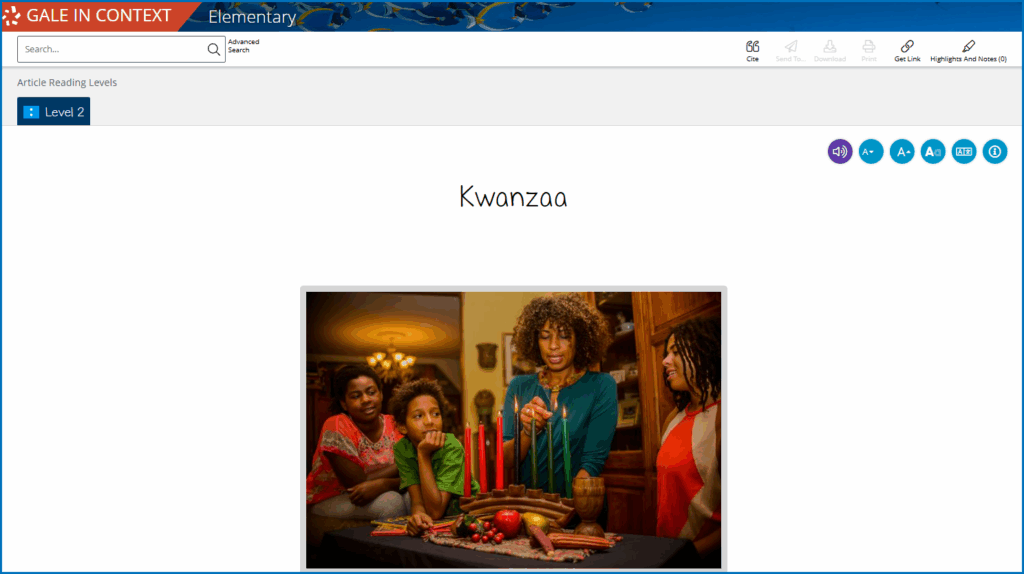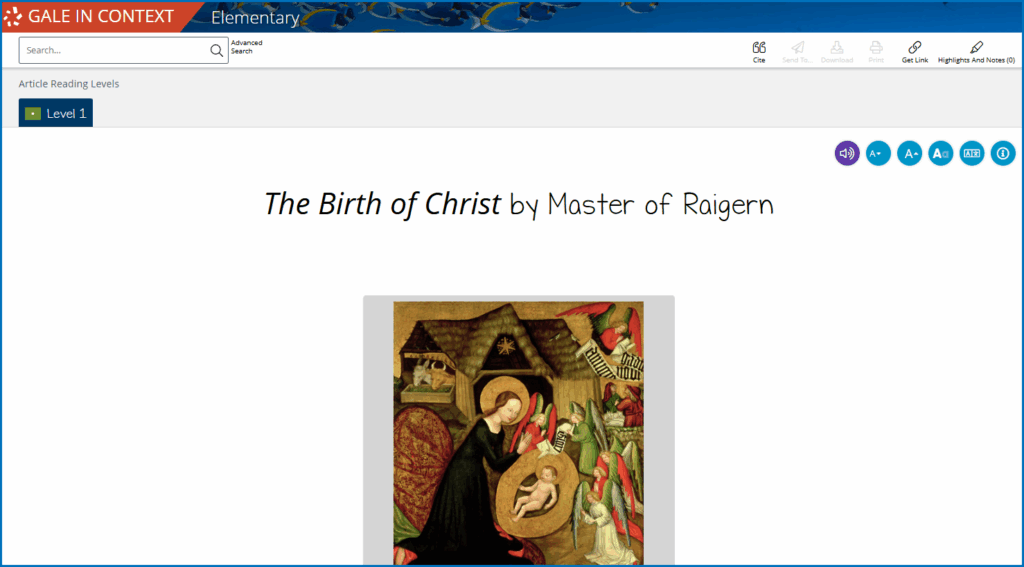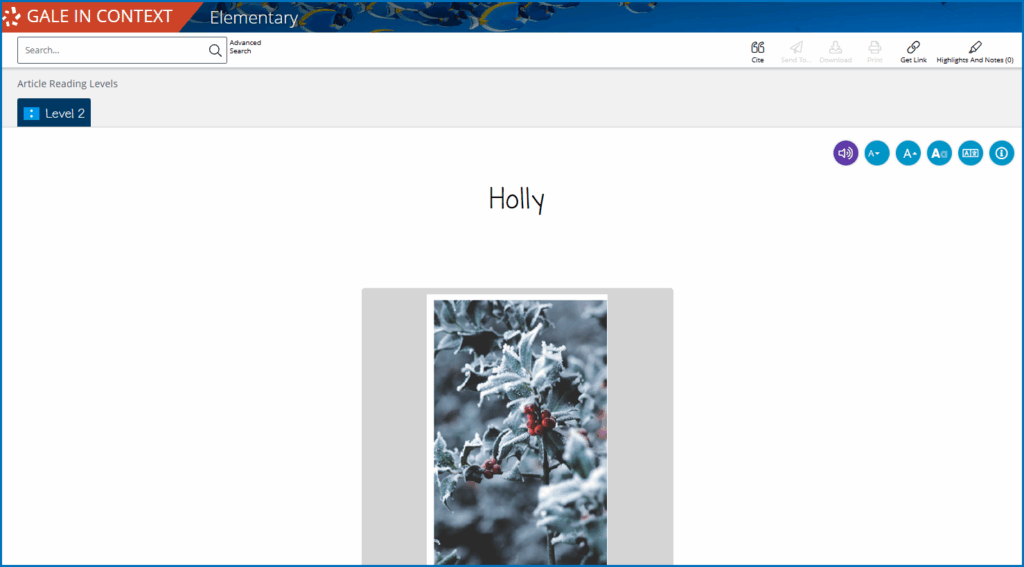|By Gale Staff|
Come December, elementary students are bubbling over with excitement in anticipation of their treasured winter celebrations. With a classroom of high-spirited children on their hands, elementary educators often find themselves in need of strategies to harness that effervescent energy for culturally inclusive literacy and social studies lessons. The challenge, of course, is finding the right resources without tacking extra prep time onto an already-busy season.
Instead of scouring internet search results for trustworthy information that’s both inclusive and engaging, start with Gale In Context: Elementary. This online database is brimming with reputable, standards-aligned resources, including magazine articles, news stories, images, short videos, and other multimedia content on holidays such as Hanukkah, Kwanzaa, and Christmas, which teachers can adapt into activities that meet learning goals while still capturing the joy of the season.
Hanukkah
Every winter, Jewish families around the world celebrate Hanukkah, also called the Festival of Lights. For eight nights, they commemorate a miracle from more than 2,000 years ago, enjoying special foods, singing hymns, and lighting the menorah each evening.
Because Hanukkah often falls around Christmastime and both include festive traditions like opening gifts and singing, younger learners may mistake them as different versions of the same holiday. You can help clear up that misconception by sharing Hanukkah’s origin story at the Second Temple in Jerusalem.
How Hanukkah Began
In the second century BCE, the Second Temple in Jerusalem was the heart of Jewish worship. Pilgrims traveled there for the shalosh regalim—the three great festivals of Passover, Shavuot, and Sukkot—and priests tended a great lamp stand called a menorah inside the sanctuary.
When the region came under Seleucid rule, King Antiochus IV banned core Jewish practices and ordered altars to Greek gods to be built inside the Temple. With daily worship forced to a halt, the community’s holiest place—the Beit HaMikdash, or House of the Sanctuary—no longer functioned as a Jewish shrine.
A small Jewish force led by the priestly Hasmonean family—later remembered as the Maccabees—revolted. Their campaign took years, but in 164 BCE, they retook Jerusalem and the Temple, where they tore down the foreign altars. This rededication of the Temple is the root of the holiday’s name: Hanukkah, meaning “dedication.”
Tradition says the Maccabees found only one sealed jar of consecrated oil, enough for a single day, but they lit the menorah anyway. Miraculously, the oil burned for eight nights, the time needed to prepare and sanctify new oil. This miracle of light became the sign that the Temple had truly been restored, and it is why Hanukkah is observed over eight nights today.
The Menorah (Hanukkiyah)
The best-known symbol of Hanukkah is a special menorah called a hanukkiyah. Unlike the seven-branched menorah of the ancient Temple, it has nine branches: eight for every night of the holiday, plus the shamash, or helper candle, used to light the others.
On the first night, families light one candle with the shamash. Each evening, they add another candle to the hanukkiyah, from right to left. When it’s time to light them, the newest candle is lit first, so that each night’s celebration begins with something new. By the eighth night, all the candles glow together, filling the home with light.
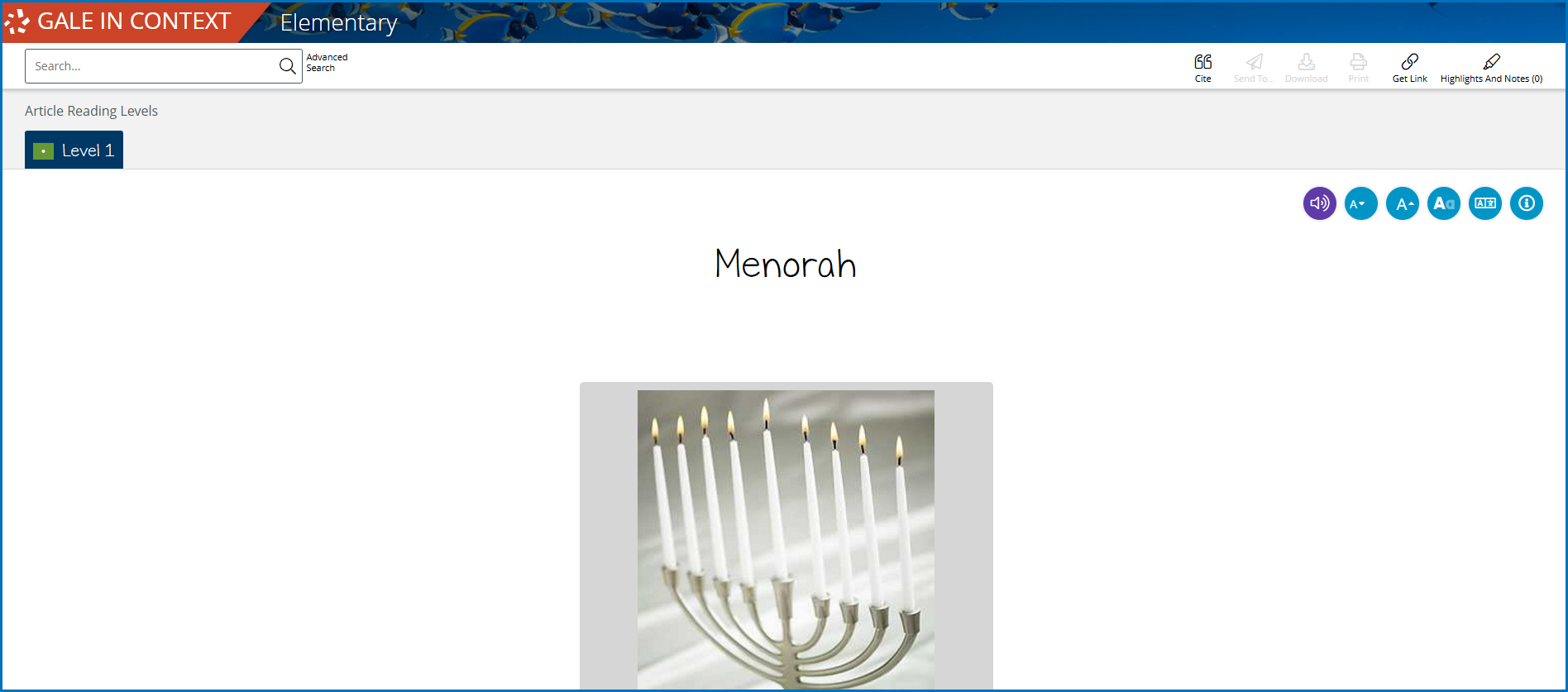
Dreidels
A beloved Hanukkah game involves a dreidel, also known as a sevivon. Each side of this four-sided top is marked with a Hebrew letter: Nun (נ), Gimel (ג), Hei (ה), and Shin (ש), which form the phrase “Nes gadol haya sham,” meaning “A great miracle happened there.”
Children spin the top and win or lose small prizes, such as coins, nuts, or candies, based on the letter that lands upright.
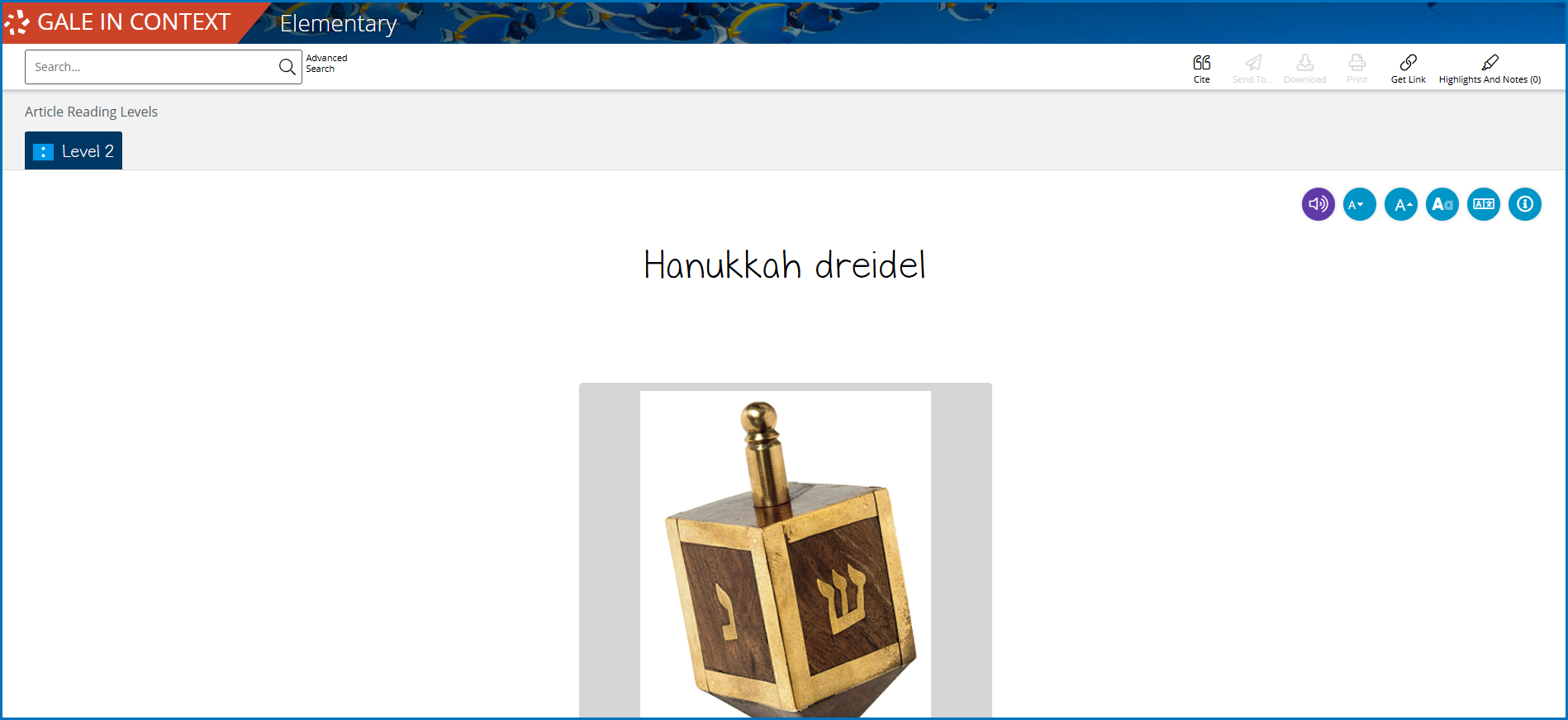
Activity Idea: Storytelling as Shared Memory
Read “The Dreidel’s Dance” out loud as a class, then encourage a discussion about the following questions:
- What words and images make the dreidel feel like a living character in the poem?
- How does the poem capture the excitement of waiting to see which letter the dreidel will land on? How does that tension make you feel while reading?
- Why might poems or stories be a good way to pass down traditions from one generation to the next?
Next, invite students to write a short poem or descriptive paragraph about a holiday tradition they look forward to with friends or family. Like “The Dreidel’s Dance” brings the spinning top to life with personification and suspense, ask them to use similar storytelling techniques that capture how those experiences feel to them.
Foods Fried in Oil
Hanukkah meals often feature foods cooked in oil, a reference to the small jar that fueled the Temple menorah. Two of the most popular foods are crispy potato pancakes, known as latkes, and jelly-filled donuts, also called sufganiyot.
Kwanzaa
Kwanzaa is a relatively new holiday, first celebrated in 1966 when the nation was entrenched in the Civil Rights Movement. Out of that struggle, Dr. Maulana Karenga, a professor of Africana Studies, introduced a festival to honor African traditions while also strengthening unity within black communities in the United States.
The word Kwanzaa originates from the Swahili phrase “matunda ya kwanza,” meaning “first fruits.” In many parts of Africa, first-fruits festivals were a time when loved ones and neighbors gathered to share meals and give thanks to the land that had sustained them throughout the harvest season.
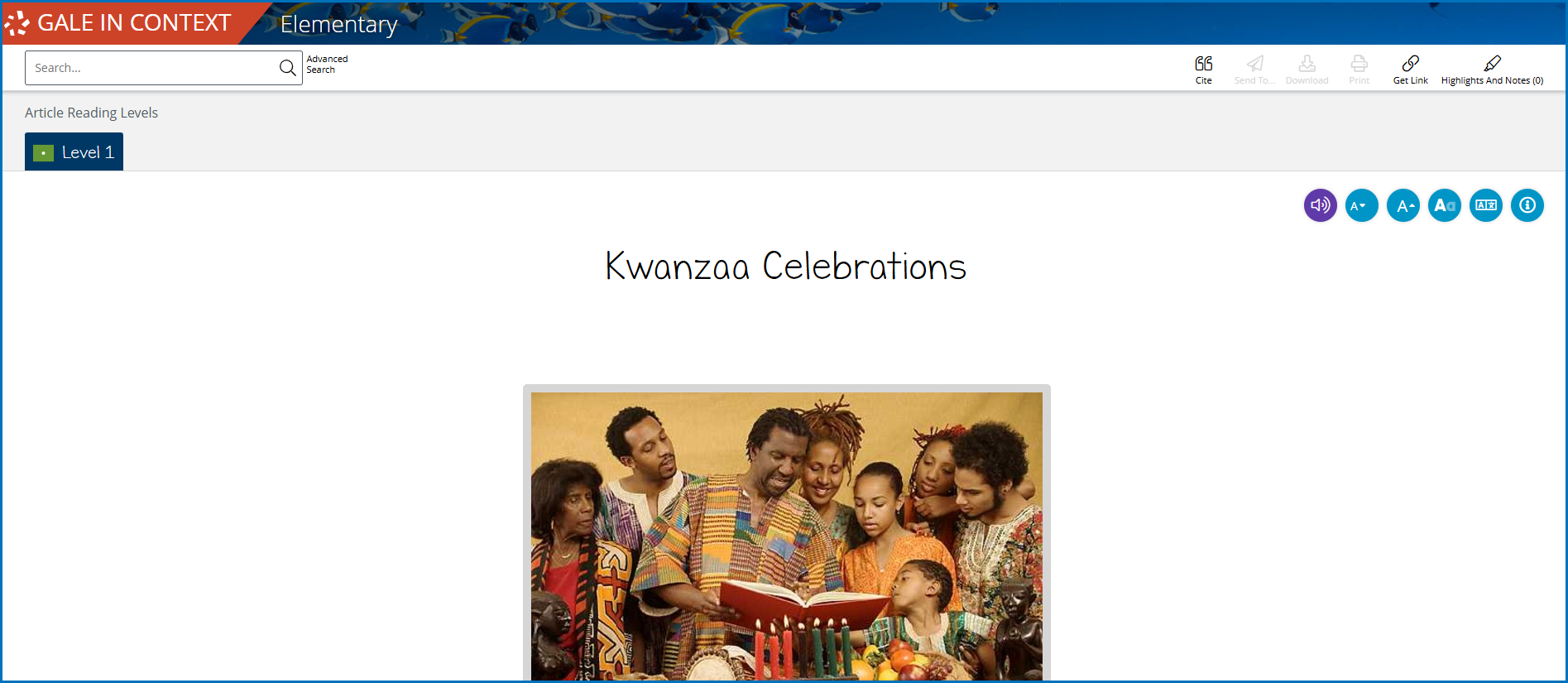
When Dr. Karenga created Kwanzaa, he drew inspiration from these traditions, aiming to reconnect with ancestral heritage and foster communal strength while affirming African identity. His vision aligned with the cultural renaissance of the 1960s and ’70s, when black Americans were reexamining what freedom meant beyond legal rights. Wearing kente cloth and natural hair, learning Swahili, and studying African history were deliberate acts of self-definition.
The Seven Principles
Over seven days—between December 26 and January 1—Kwanzaa invites reflection on the Nguzo Saba, or Seven Principles. Each day focuses on one value:
- Umoja (Unity)
- Kujichagulia (Self-Determination)
- Ujima (Collective Work and Responsibility)
- Ujamaa (Cooperative Economics)
- Nia (Purpose)
- Kuumba (Creativity)
- Imani (Faith)
The Seven Symbols
There are also seven symbols of Kwanzaa, each tied to the values of the holiday. Gale In Context: Elementary includes fiction, nonfiction, and craft ideas related to Kwanzaa, so you can pair reading with activities that let students understand the values of Kwanzaa in creative ways.
- Kinara: A candleholder for the mishumaa saba.
- Mishumaa Saba: Seven candles representing the seven principles. The black candle in the middle is for the people, red candles on one side for struggle, and green candles on the other side for hope in the future. Families light a new candle each evening, using it as a moment to talk about the principle it represents and what that idea means in their own lives.
- Mkeka: All the symbols of Kwanzaa are placed on an mkeka, a woven mat that represents history and tradition as the foundation of community life.
- Mazao: The mazao, or cornucopia, represents the rewards of collective work and the connection to harvest celebrations across Africa. Families may display fruits and vegetables on the mkeka to remind themselves of the importance of sharing in abundance.
- Muhindi: Families place one ear of corn, or muhindi, for each child in the household, showing that every child is valued as a bearer of hope. Even homes without children will place an ear of corn to honor the community’s young people.
- Kikombe cha Umoja: A unity cup used in a pouring ceremony honoring ancestors.
- Zawadi: Children receive handmade gifts of cultural significance, known as zawadi, to encourage them to continue pursuing personal development.
Activity Idea: Kwanzaa Principles Journal
Over seven days, assign short readings or excerpts from Gale In Context: Elementary about Kwanzaa. Afterward, have students write a piece inspired by that day’s principle through personal reflection, a connection to classroom experiences, or even a drawing or a short poem. At the end of the week, gather the pages into a class book that shows the many ways students can interpret and embody these values, even while coming from different cultures and families.
Christmas
When it comes to the most widely celebrated December holiday in the United States—Christmas—there’s a good chance your students already know the origin story of a baby born in Bethlehem. What they may not realize, however, is that many of the practices we now consider Christmas traditions—such as indoor evergreens, candles in the window, and comfort food feasts—trace back to ancient spiritual customs intended to bring hope during a long, cold winter.
When Christianity spread through Europe, people held fast to their midwinter traditions, while incorporating the Savior’s birth into their celebrations. The same went for other countries.
Today, many Christmas customs still reflect that mix of faith and folklore, and with Gale In Context: Elementary, you can share these and other holiday traditions from cultures around the world.
Norse Yule
Long before Christianity arrived in Northern Europe, Norse and Germanic communities marked the winter solstice with Yule, or jól. To brighten their homes and spirits, families brought evergreens and mistletoe indoors to remind themselves that life would return in the spring—a practice that centuries later grew into the Christmas tree tradition in Germany. They also burned a massive log in the hearth, letting it glow for days to ward off evil spirits. Today, Scandinavians still use the word Jul for “Christmas.”
Las Posadas
From December 16–24, families in Mexico and across Latin America take part in nine nights of posadas, or “lodgings.” Each night, families and friends walk together by candlelight, carrying a brilliant star-shaped piñata that represents the star of Bethlehem, while re-enacting Mary and Joseph’s search for shelter. At last, a home opens its doors, and the evening turns into a feast shared with the whole community.
Misa de Gallo
In the Philippines, families prepare for Christmas with nine days of pre-dawn worship known as Misa de Gallo, or “Mass of the Rooster.” Spanish friars introduced the practice in the 1600s, allowing farmers and laborers to attend church before beginning their long days in the fields. After each service, families gather for a simple breakfast sold by street vendors. Two favorites are bibingka, a soft rice cake baked in clay pots, and spicy ginger tea.
Yule Lads and the Yule Cat
Icelandic homes have to contend with the mischievous jólasveinar or the Thirteen Yule Lads, including Hurðaskellir (Door-Slammer), Kertasníkir (Candle-Stealer), and Bjúgnakrækir (Sausage-Swiper). Children place shoes by the window, hoping that the Yule Lads will leave small gifts if they’ve behaved. Alongside the Lads prowls Jólakötturinn—the Yule Cat—a giant creature said to devour anyone who hasn’t received new clothing for Christmas. The legend started as a way to encourage textile workers to finish spinning the autumn-shorn wool before year’s end, in return for new clothes gifted by the farmers they worked for.
La Befana
In Italy, the Christmas season extends into January with the celebration of Epiphany. On the night of January 5, children await La Befana, a kindly old woman who flies from house to house on a broomstick.
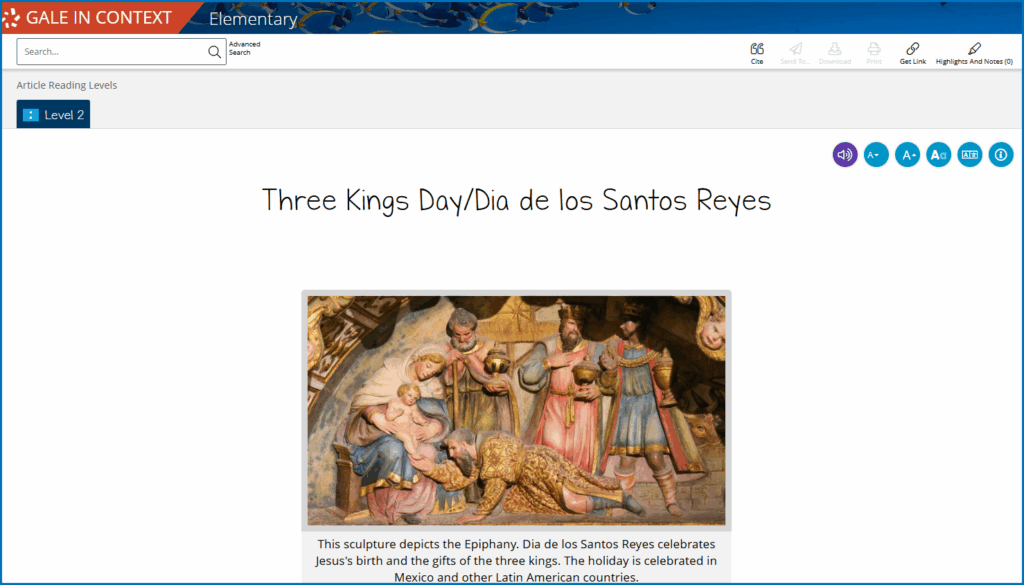
According to legend, the Magi invited her to join their journey to Bethlehem, but she stayed behind to finish her housework. Regretting the decision, she set off late with gifts for the Christ child and has been searching for him ever since. Today, families hang stockings by the fire, and La Befana fills them with sweets and small presents or carbone, coal-shaped candy, for those who misbehaved.
Holidays can look very different from one culture to the next, but the sense of joy and meaning behind them is something every child can recognize. Inviting students to compare these traditions—and to share their own—turns the season into a chance for connection as well as celebration.
To make your December lesson planning merry and bright, reach out to your local Gale sales representative and request more information about how you can use the Gale In Context: Elementary to transform holiday excitement into moments of wonder and connection.

